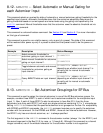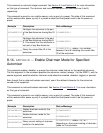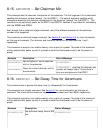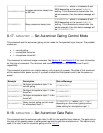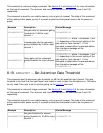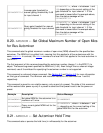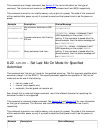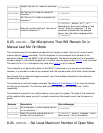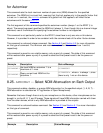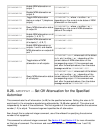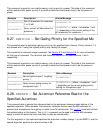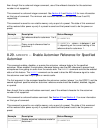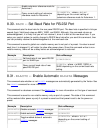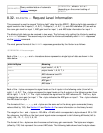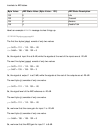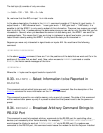
for Automixer
This command sets the local maximum number of open mics (NOM) allowed for the specified
automixer. The NOM limit is a local limit, meaning that this limit applies only to the specific Vortex that
is is set on. In contrast, the
AMGNOM command is a global limit that applies to all linked Vortex
automixers with the same
AMBUSID.
The first argument of this command specifies the automixer number (always 1 on the EF2211) to
adjust. The second argument specifies the NOM limit (always 1). Even though this is a channel integer
command, use of the wildcard for specifying the automixer number is not supported.
This command is not particularly useful on the EF2211 since there is only one mic on this device.
However, it is provided in order to be consistent with the command sets of the other Vortex devices.
This command is a channel integer command. See
Section 6.3 and Section 6.2 for more information
on this type of command. The minimum and maximum values for this command are 1 and 64,
respectively.
This command is saved to non-volatile memory only as part of a preset. The state of this command
will be restored after power-up only if a preset is saved and that preset is set to be the power-on
preset.
Example Description Status Message
S01AMNOM11
Set local NOM for automixer 1 to a
maximum of 1 mics.
S01AMNOM11
S01AMNOM1?
Query current local NOM limit for
automixer 1.
S01AMNOM1x , where x is always 1, since
there is only 1 mic on this device.
8.25. AMNOMAT -- Select NOM Attenuation on Each Output
This command enables, disables, or queries NOM attenuation for the specified output (1, A, B, T) . .
NOM attenuation is calculated as 10*log(Number of Open Microphones).
Remember that even though there is only one microphone on this device, other microphones can be
brought in via the W, X, Y, and Z busses. These signals will have NOM information carried with them
from the other devices, which is why NOM attenuation is provided at the outputs.
This command is a channel boolean command. See
Section 6.3 and Section 6.1 for more information
on this type of command.
This command is saved to non-volatile memory only as part of a preset. The state of this command
will be restored after power-up only if a preset is saved and that preset is set to be the power-on
preset.
Example Description Status Message



